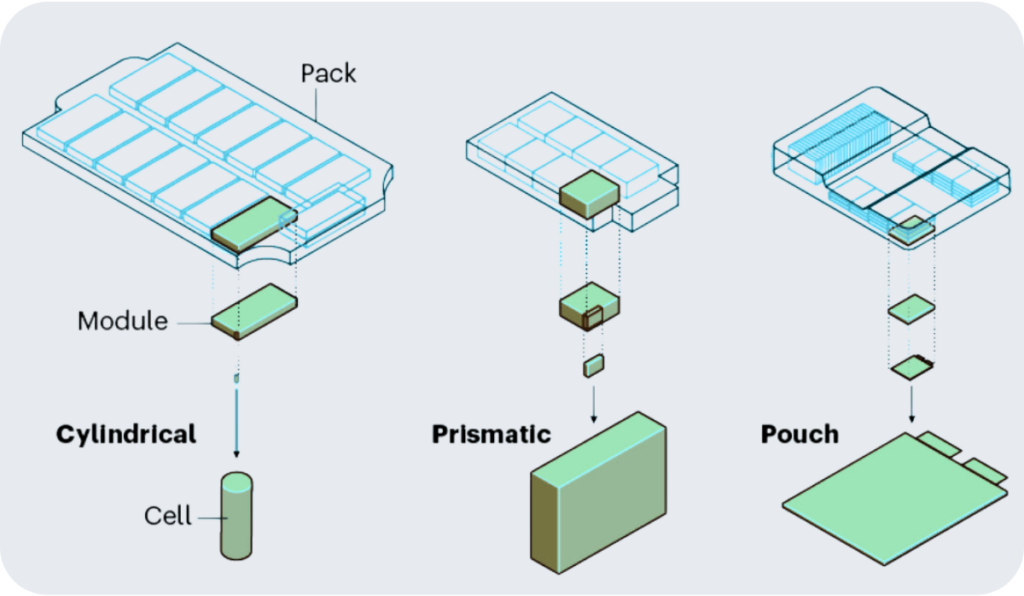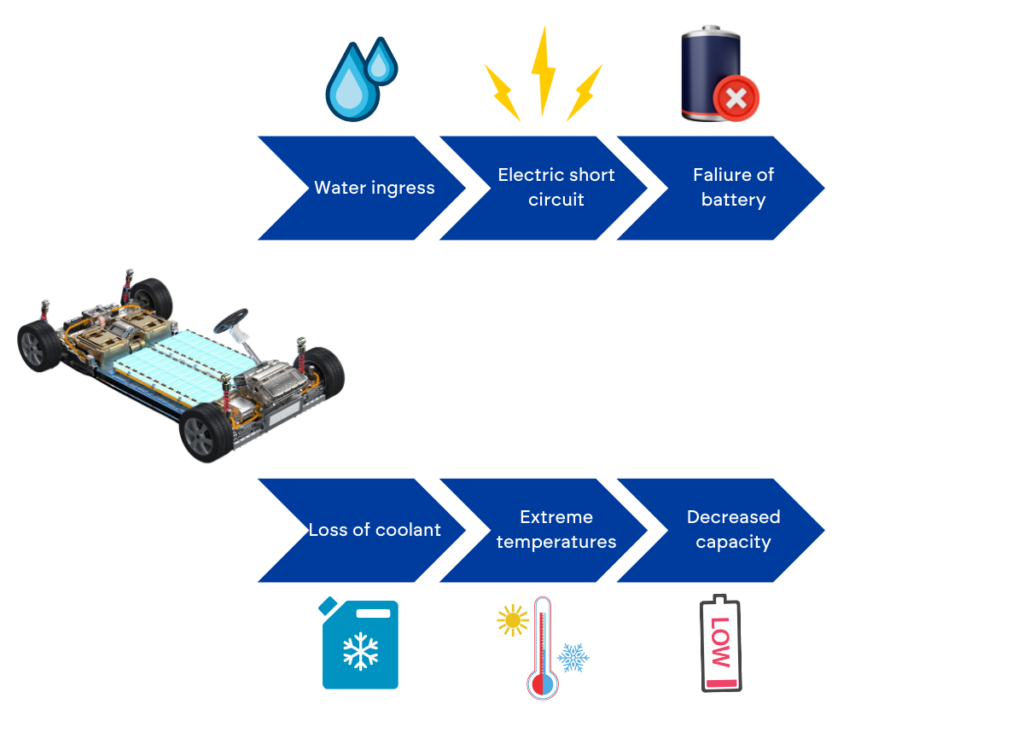As electric vehicles (EVs) continue to revolutionize the automotive industry, ensuring the safety and reliability of their most critical component—the battery—remains paramount. While vehicle fires are not a new phenomenon, the spotlight has increasingly focused on those involving EVs, often raising concerns among consumers and industry stakeholders alike. Despite the rarity of these incidents, the stakes are high. The industry faces the challenge of maintaining consumer trust and ensuring that catastrophic battery failures become a thing of the past.
Electra Vehicles, Inc is at the forefront of addressing this challenge throughout the battery lifetime. Through the pioneering use of artificial intelligence (AI) at every stage of the battery life from design to production to battery passport, Electra is setting new standards for EV safety by predicting battery failures before they occur. This proactive approach not only mitigates the risk of fires but also enhances the overall performance and longevity of EV batteries.

Safety Starts at the Cell Level
Battery safety to avoid faults and fires fundamentally begins at the cell design level, where the groundwork for reliable and secure performance is laid. It is at this stage that critical decisions regarding materials, electrode architecture, and thermal management are made, directly influencing the battery’s ability to withstand stress and prevent hazardous conditions such as thermal runaway. Advanced design techniques, including the use of high-quality separators, optimized electrolyte formulations, and robust mechanical enclosures, play a crucial role in mitigating risks.
Additionally, integrating sensors and diagnostics at the cell level allows for early detection of potential issues, ensuring that any signs of degradation or abnormal behavior are identified before they escalate into more severe problems. By prioritizing safety from the very beginning of the design process, manufacturers can create cells that not only deliver high performance but also maintain the highest standards of safety throughout their lifecycle.
Electra’s Cell Design Studio empowers you to optimize battery designs by offering features such as cell chemistry selection, comprehensive simulation analysis, and evaluation of new materials, ensuring that your designs achieve the highest levels of performance and safety.
Cell Digital Twins: Empowering Safety Insights
Creating safer EV batteries involves a multi-faceted approach that combines rigorous testing, detailed analysis, and advanced AI-enabled modeling. Testing allows for the validation of battery performance under various conditions, identifying potential vulnerabilities early in the design process. Through in-depth analysis, particularly of how batteries degrade over time, engineers can understand the factors that contribute to wear and tear, enabling them to enhance durability and safety. AI-enabled modeling takes this a step further by predicting potential failure points and optimizing battery designs accordingly, ensuring that issues such as overheating or short-circuiting are addressed before they can pose a threat. This integrated approach not only improves battery reliability but also significantly reduces the risk of safety incidents, leading to safer and more dependable electric vehicles.
Electra’s Cell Digital Twin is a powerful tool that brings your battery designs to life in a virtual environment, offering advanced features such as laboratory test analysis, degradation history tracking, and machine learning (ML) modeling. By integrating these capabilities, the Cell Digital Twin enables you to gain deep insights into the performance and longevity of your cells, allowing you to predict and mitigate potential issues before they arise. This ensures that your battery designs are not only innovative but also robust and reliable, meeting the highest standards of quality and safety without compromising your budget or capacity.
Building Safer Battery Packs
Battery safety at the pack level is crucial as it serves as the final line of defense against potential failures that could compromise the entire system. While individual cells are the building blocks of a battery, the pack level involves the integration of these cells into a unified, functioning unit that powers the vehicle. This is where critical safety measures, such as thermal management systems, protective casing, and fail-safes, are implemented to ensure that any issues within a single cell do not escalate into a more significant hazard. Effective safety management at the pack level not only prevents catastrophic events like fires or explosions but also enhances the overall reliability and longevity of the battery. Ensuring robust safety protocols at this stage is essential for maintaining consumer trust and advancing the widespread adoption of electric vehicles.
The safety benefits of Electra’s Battery Digital Twin stem from its ability to deliver detailed analysis of battery pack laboratory tests and develop highly representative machine learning (ML) models. By analyzing real-world data from prolonged laboratory testing and field assessments, the software offers critical insights into how battery packs perform under different conditions and over time. These insights allow engineers to detect potential safety risks early on and adapt pack designs or management strategies to mitigate those risks. The ML models generated by the Battery Digital Twin also enable predictive maintenance and enhanced monitoring, ensuring that batteries operate within safe parameters throughout their lifecycle, ultimately reducing the likelihood of safety incidents and improving overall reliability.

The Complexity of Battery Failures
The causes of battery failure are multifaceted, often involving a combination of factors that can be difficult to detect and manage. One of the most common and dangerous issues is lithium plating. This phenomenon occurs when metallic lithium deposits form around the anode, particularly during fast charging at low temperatures. Over time, these deposits can lead to the growth of dendrites—needle-like structures capable of piercing the separator between the anode and cathode. This can result in a short circuit, leading to rapid self-discharge and, in severe cases, thermal runaway—a chain reaction that can be extremely difficult to stop once initiated and extremely dangerous as well.
Our software empowers fleet managers and EV drivers alike with complete visibility into the real-time status of their electric vehicles by estimating the State of Charge (SoC), State of Health (SoH), and power for batteries. With Electra’s advanced historical degradation analysis tools, we provide key indicators for potential faults, helping to mitigate risk before it escalates into a significant issue or dangerous fire. This proactive approach allows for planning and preventative maintenance, getting ahead of costly unscheduled vehicle failures. Additionally, our software estimates the Remaining Useful Life (RUL) of batteries, enabling fleet managers to identify vehicles nearing the end of their automotive life and take appropriate action to ensure continued fleet efficiency and reliability.

Proactive Prevention: A New Standard for EV Safety
The ability to detect and address potential failures before they occur opens up new possibilities for managing battery health. Once a degraded cell or module is identified, vehicle manufacturers can take immediate action to mitigate further damage. This could involve altering the battery’s management strategy to minimize risk or scheduling a service visit at the driver’s convenience to rectify the issue.
Our software is designed to proactively prevent fires in EV batteries from the very beginning of the design phase through to the battery management phase, ensuring safety and reliability at every stage. Starting with the cell design, our advanced tools allow for the selection of optimal materials, architecture, and thermal management systems, reducing the risk of hazardous conditions such as thermal runaway. This meticulous attention to safety continues through the battery management phase, where our EVE-Ai Fleet Analytics capabilities take over.
EVE-Ai™ Fleet Analytics enables managers to take a proactive safety approach by leveraging comprehensive data from the battery, the vehicle, and the surrounding environment. By applying sophisticated machine learning algorithms, EVE-Ai™ can detect early signs of potential battery issues or failures before they manifest into serious problems. This not only prevents fires but also optimizes fleet efficiency and performance, ensuring that vehicles remain safe, reliable, and operational. Through continuous monitoring and analysis, our software provides a robust safeguard against battery-related risks, setting new standards for EV safety and performance.
Our software also estimates the Remaining Useful Life (RUL) of batteries, allowing fleet managers to proactively identify vehicles nearing the end of their automotive life. This early detection empowers them to take timely action, enhancing safety by preventing potential battery failures and ensuring the continued efficiency and reliability of the fleet.

Battery Passport: A Game Changer in Battery Management
Starting in 2027, the Battery Passport will mandate that every battery over 2kWh entering the EU market includes:
- A unique identifier to identify each battery;
- Basic characteristics such as the battery type and model;
- Continuously updated statistics on performance and durability, maintained by entities responsible for repairing or repurposing the battery.
The battery passport will play a significant role in promoting EV battery safety by providing a comprehensive, transparent record of a battery’s lifecycle, from production to recycling. By tracking key data such as materials used, manufacturing conditions, performance metrics, and maintenance history, the battery passport enables manufacturers, service providers, and regulators to ensure that safety standards are met at every stage. This traceability allows for better monitoring of battery health, early detection of potential issues, and informed decision-making for maintenance or replacement, all of which contribute to enhancing the overall safety and reliability of EV batteries.
To ensure EV battery safety throughout its lifetime, proper management and compliance with regulations like the battery passport are crucial. Advanced technology, such as Electra’s EVE-Ai Fleet Analytics, plays a pivotal role in meeting these detailed requirements by streamlining the compliance process through AI-enabled automation. This approach enhances the collection, storage, and management of critical data points, offering comprehensive insights into a battery’s health and performance from production to end-of-life.
Electra’s comprehensive data management solves for compliance and safety by automatically capturing and storing essential dynamic data. This simplifies reporting while the system’s data automation capabilities minimize human error, enhancing the accuracy of crucial battery health and safety metrics such as State of Charge (SoC), State of Health (SoH), current internal resistance at the battery pack level, and the number of charge-discharge cycles. These metrics are vital for understanding and maintaining battery safety across its lifecycle.
Beyond compliance, Electra’s platform offers additional insights for battery management, such as estimating the Remaining Useful Life (RUL) of the battery. This foresight allows for more effective maintenance scheduling, warranty management, and end-of-life planning, ensuring that batteries remain safe and operational for as long as possible. Furthermore, the system’s proactive risk analysis provides real-time monitoring and reporting of potential risk factors, helping to prevent downtime and extend the battery’s usable life. Through these advanced capabilities, Electra’s EVE-Ai Fleet Analytics ensures that EV batteries are managed with the highest standards of safety and reliability throughout their lifetime.
The Future of EV Safety with AI
As the automotive industry continues its transition to electric mobility, the role of Artificial Intelligence in ensuring the safety and reliability of EV batteries cannot be overstated.
By embracing Electra’s whole lifecycle AI-driven battery management, the industry can move beyond reactive maintenance to a proactive approach that not only enhances safety but also extends the lifespan of EV batteries. The result is a safer, more reliable, and more sustainable future for electric vehicles.
For more information about Electra Vehicles and its AI-powered solutions, visit www.electravehicles.com.
—
About Electra:
Electra Vehicles aims to maximize the full potential of battery power to enable electric mobility to take society further. Through technology and strategic partnerships with automotive and battery manufacturers, fleet operators, and other stakeholders, the company strives to be a leader in AI/ML-based controls, data analytics, and design for battery packs in electric vehicles, mobility, and other market segments, driving positive change and creating a more sustainable future for all.
For media inquiries or to arrange an interview, please contact: grossi@electravehicles.com

